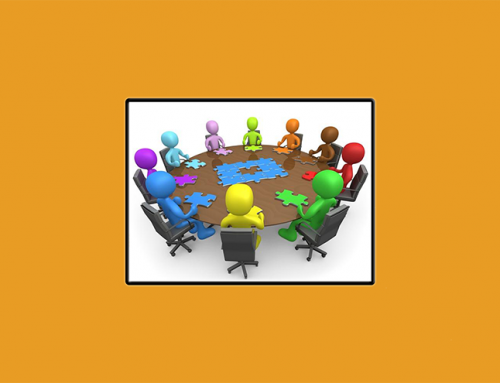You have been invited to a meeting. Although, it may look like as simple as just showing up/dialing in the meeting, there is a lot more to it.
We will divide the meeting related activities in different areas and drill down in each one:
- Receiving the Meeting invite
- Attending the Meeting
- Meeting Closure
- Post Meeting
- Side Opportunities in a Meeting
Receiving the Meeting invite:
When you receive the meeting focus on the following items:
- Meeting Subject: This gives you overall idea/objective of the meeting.
- Meeting Participants: Sometimes, this is even more important than the meeting subject. Showing up in right meetings especially with leadership matters a lot in the corporate world. Check on each participant in the meeting, which group they represent and try to anticipate what perspective/point of view they may be bring to the table.
- Agenda: Go through the agenda to get the full context of the meeting. Special focus on any part/area associated with you. You may need to prepare for the meeting accordingly. Going unprepared for the meeting can make a bad impression which may take forever to erase!
- Online option: If there is a possibility that you may need to dial in remotely, do not hesitate to ask for an online option to be added.
- Accept/Decline/Tentative: Depending upon the importance of the meeting and your schedule, you may want to choose any of these three options.
- Accept: You may simply accept the meeting. You may even thank the organizer for setting it up (in the content section). If you want additional agenda, then putting it in the Acceptance of the invite may not be the best method because not everyone opens the meeting acceptance email. Communicate with the organizer separately.
- Decline: In case you are declining the meeting, let the organizer know if its due to a conflict or for any other reason. Offer to send a delegate or propose a new time if possible. You may also decline if you feel you will not add any value in the meeting. This may be slightly tricky though.
- Tentative: This option is mostly used by leadership whose calendars are extremely busy/fluid. Tentative shows that attendee may or may not come depending on the situation. If you are an individual contributor, avoid this option, if you must use it then convert it into an Accept or Decline at least 1 day in advance.
Do not leave the Meeting organizer hanging by completely ignoring the meeting invite on your calendar.
Attending the Meeting:
You may want to check your calendar first thing in the morning for all the meetings for the day and next day. This will help in prioritization and preparation for the meetings.
- Punctuality: Reach the meeting room/dial in within 1-2 minutes of start of the meeting, little bit of informal communication with other attendants can lighten the atmosphere and tilt the meeting outcome in your favor. One of my GMs was ex-military. He will leave any meeting 5 minutes early so he is on time for his next meeting!
- Introduction: Do not assume everyone to know/remember who you are and what area you represent. A quick intro can be very helpful for everyone.
- Meeting Minutes: Depending on the meeting importance you may ask if the organizer plans to send out meeting minutes, which is really a hint to the organizer to start taking notes!
- Record/Take Notes: Depending on meeting importance, you may record the meeting and/or take your own notes. These may come very handy for future reference. You may use OneNote or similar tools for this purpose.
- Steering the conversation: Its important to give your full attention and jump in where your input adds value. Be aware, if lot of work/ action items are getting assigned to you/your team. Make sure you only accept what is under ‘your authority’ and ask for manager/partner attendance etc. for prioritization etc.
Meeting Closure:
Meeting is coming to the finish line. This is a critical time. Focus/drive towards following items:
- Summary: You may ask for a quick verbal summary from the organizer or summarize main points yourself. This will give you some airtime and give clarity to everyone in the meeting.
- Meeting Minutes: Do not hesitate to ask the meeting organizer to send meeting minutes/notes with main discussion points, action items, assignees and dates.
- Put the chairs back/ clean the whiteboard etc.: Yes, I have seen people complaining when chairs are all over the place or whiteboard is not clean.
Post Meeting:
- Managing up/Sideways – Depending on the meeting outcomes, sometimes you may need to let your manager/partner know about the outcome immediately. This is especially important if a ‘bad news’ is on the way. Make sure your leadership hears your view first before anyone else.
- Meeting Minutes – Read through the minutes and see if any modifications are needed. Its important to fix the meeting minutes, otherwise they become the plan of record.
- Follow-up – Follow up on your action items within assigned dates. You may set reminders if needed.
Bonus: Side Opportunities in a Meeting:
- Every meeting is a networking opportunity. Get to know each participant and try to strike a positive rapport. You may never know where you may meet with them again. Try to remember as many names and designations as possible.
- Every meeting is your opportunity to showcase your technical and communication skills. Use them!
- Ask questions in the meeting as this shows your engagement and interest in the topic.
- While multi-tasking like replying to IMs or emails may be needed, keep it as low as possible.
- Do not ignore items that may not directly related with you. Corporates value people who understand end to end process encompassing multiple systems. Stretch yourself to understand things across your boundaries.
- Sit close to the power centers in a meeting as that will send focus/attention your way at no extra cost!





Leave A Comment